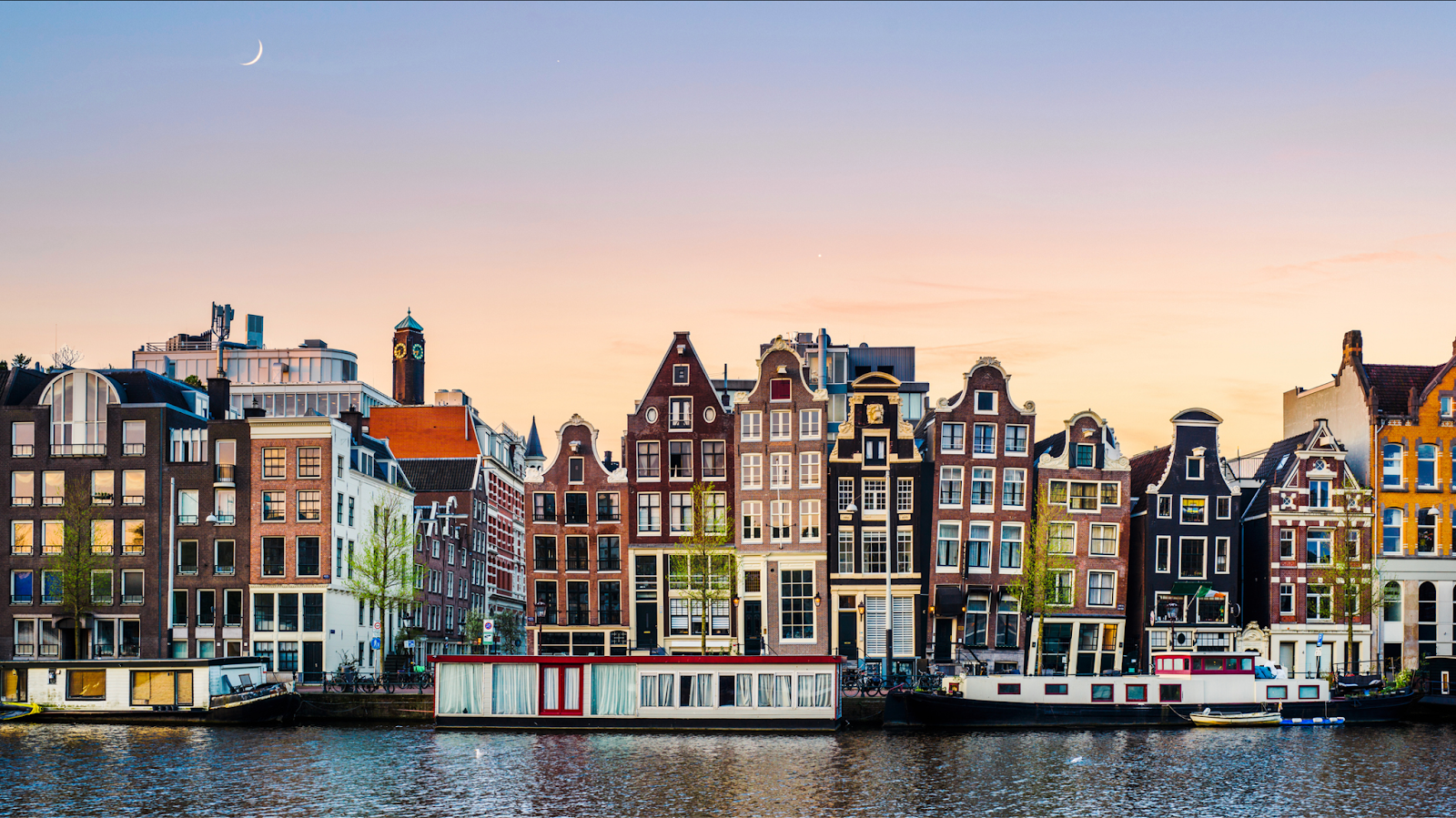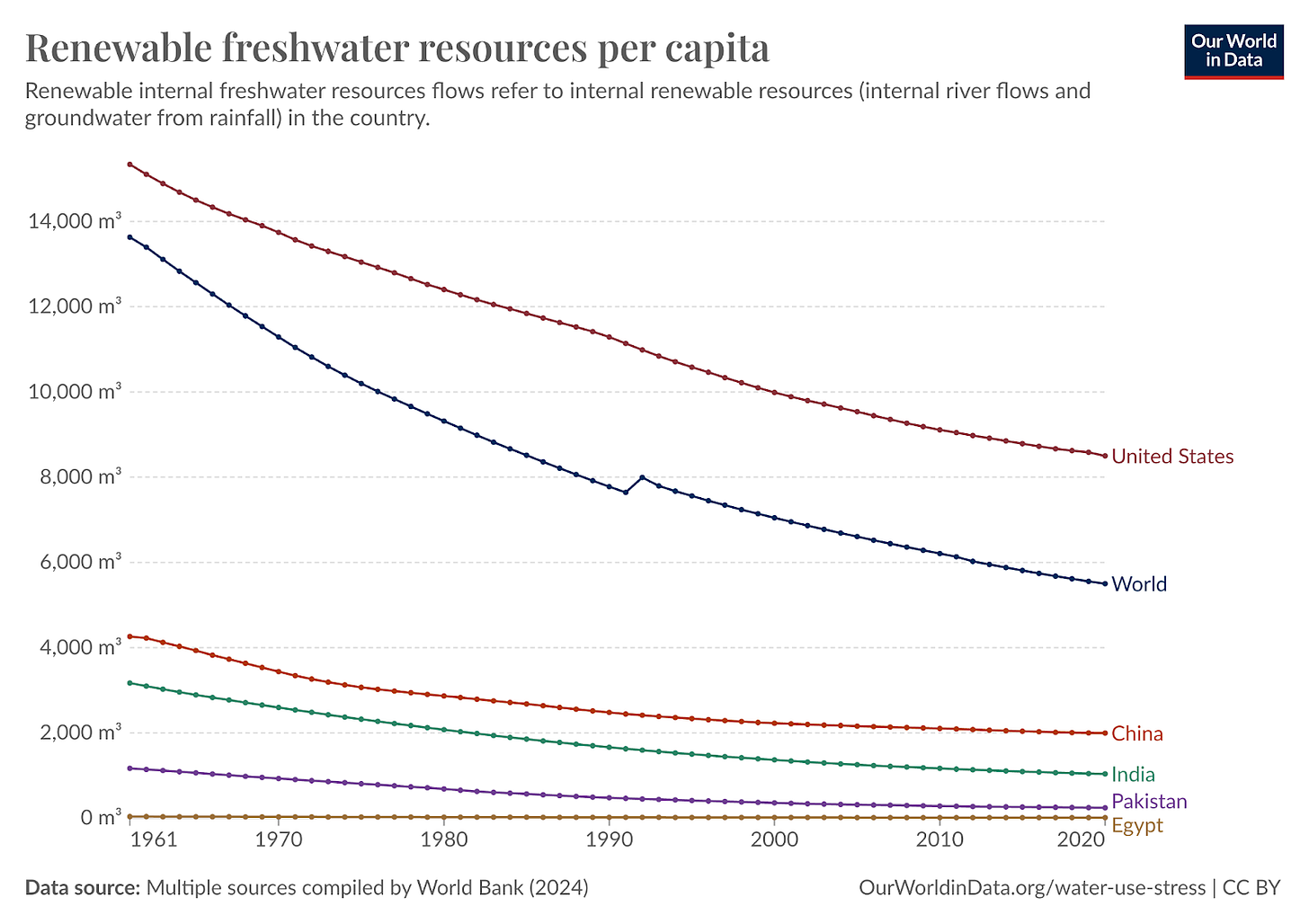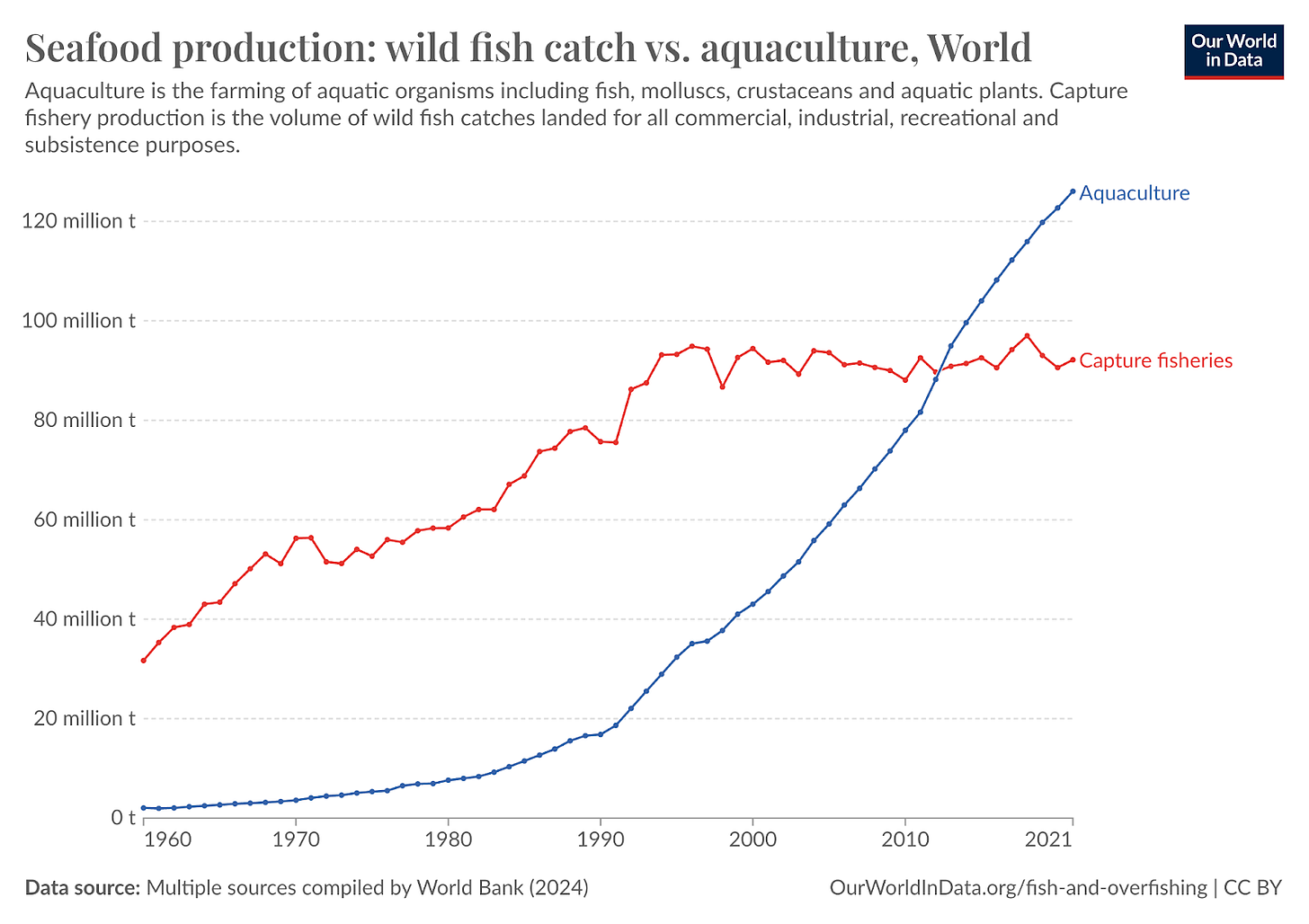100 Billion Humans
The world can carry them!
Some people fear there are too many humans on Earth.
They’re wrong.
We could 12x our population, from 8B today to 100B if we wanted to, while maintaining quality of life on Earth.
Where would we all fit?
Could we feed everybody?
Wouldn’t pollution explode and ecosystems collapse?
This is what we’ll answer today.
This is Part 1 of a four-part series (1, 2, 3, 4).
Our Current Path
Today’s world population is ~8B, and according to the UN, it will peak close to 10B around 2080:
This is probably an overestimate: It’s not the first time the UN has revised the estimate downwards, and it has incentives to not reflect the true decline in population forecasts.1

So we’re on a trajectory to only reach about 10B people at most, and one of the reasons is that many people aren’t having kids because they fear overpopulation and the destruction of the environment.
I was a college student when I read Mr. Ehrlich’s “The Population Bomb.” I took it to heart and now have no grandchildren, but 50 years later the population has increased to eight billion without dire consequences. I was gullible and stupid.—David Henderson, EconLib
So should we be concerned about reaching 10B people? After looking at the numbers, I believe we shouldn’t, because the Earth can carry at least 10x more people.
Where Would We Fit 100 Billion Humans?
The Netherlands is the 6th happiest country on Earth.

It has ~18M people living on ~33,500 km2. That’s a population density of ~545 people per km2.
And the Netherlands is nice!
If the Earth had the population density of the Netherlands, it could hold 70 billion people!2
And the Netherlands doesn’t pack people with particular intensity:
Dutch scientist Antoni van Leeuwenhoek (1632-1723) estimated that if the population of Holland in his day (one million people) were extrapolated across the estimated area of inhabitable land around the globe, it would equal 13 billion people. Now, that same extrapolation yields 70 billion. Increase population density in the Netherlands a bit and extrapolate it to the rest of the world, and you get 100B.
If there were that many people, most would live in dense urban areas. The city of Hong Kong, for example, has 40k people per square km.3
If Algeria had the population density of Hong Kong, we would get to 100B people. The rest of the world—98%—would be left to nature.
Of course, neither of these extremes will happen. What we will get is hundreds of megalopolises like Hong Kong, huge swaths of built up areas with densities like in the Netherlands, and plenty of open land leftover. The point is we can fit if we want to. There’s physical room for us while still retaining nice natural areas.
This assumes we would keep the population density of Hong Kong, but in fact we can already build much taller buildings if we want to. As technology gets better, we will be able to pack even more people per km2, leaving even more areas free of humans, if that’s what we want.

We could also expand the land we live in by making the uninhabitable habitable. A perfect example is the Sahara desert, a huge sea of nothingness.4 The only things we need to make it livable are water and cooling. I explained in Can Solar Costs Keep Shrinking? that very cheap electricity is coming, and in the desalination articles how the vast majority of deserts could be habitable today with desalinated water.
Speaking of water: Do we have enough?
Watering 100B Humans
With 100B humans, we would need much more water. And you might be concerned about the fact that we’ve already been using our aquifers to water our crops and hydrate ourselves.
But the only reason this is a problem is because we’ve been using the water that is conveniently below our feet, the way the English of the 18th century first used the coal that was lying on the beach before venturing deeper into mines. Similarly, as water from aquifers becomes scarcer, we will look to the sea for more. Consider this:5
70% of the Earth’s surface is water.
The Earth’s total water supply is basically constant.
Water changes form, from liquid in the sea to gas in the clouds to rain or snow.
It also changes location, from sea to mountains to rivers to aquifers to fields.
Only 2.5% of our water is freshwater.
We can participate more actively in this cycle, transforming saltwater into freshwater, the way the Earth does naturally today.
The cost of desalination today is $0.40/ton—93% less than what San Franciscans pay for their tap water.6
Most crops could be profitably grown with desalinated water today if the water cycle was controlled (ie, no spillage or filtering in the soil).
You can read more in the desalination articles.
OK, so we have plenty of water, we just need to convert it from saltwater to freshwater. But what about food?
Feeding 100B Humans
In How Can Vertical Farms Become Viable?, I highlighted how the Netherlands’ agricultural productivity is 100x that of Nigeria for crops like tomatoes:
And this is why the Netherlands is the second largest global food exporter!

So if you shape the world into the image of today’s Netherlands, not only do you fit 70B people, but you also end up with a huge food surplus.
And this is without vertical farming! In The Promise of Vertical Farming, I highlight how we could grow food more efficiently in vertical farms with solar panels than in open land. The only issues are energy costs and labor, but energy costs are about to shrink by 10x, and labor costs are a matter of automation. So the Netherlands’ productivity could increase 10-15x with vertical farming, feeding many more than 100B people. (More info on vertical farms here and here).
And since it would take us centuries to reach 100B people, we would have time for technology to keep improving, shrinking energy and labor costs, making food plentiful. Imagine AI managing our vertical farms with nuclear energy in underground facilities. How much food could we produce? As much as we want!
You might say: Yeah but that’s for crops. What about meat? Of course, we couldn’t feed 100B with free-range, grass-fed beef. But we could grow that same beef in a facility. Lab meat is already a reality, and by the time there are 100B of us, the technology will be good enough.
Fun fact: After chicken, the second biggest source of protein for humans is not beef, it’s not pork, it’s farmed fish! And it’s growing fast.
You can farm fish anywhere on land, just build bigger pools. Build them underground if you want to save surface space.
And that’s just using land! There are huge swaths of ocean devoid of life, but we could fertilize them to increase sealife and harvest the booming fish population. Fish is an extremely efficient source of protein,7 so we could use it to feed a world population of 100B many times over.
So the only food limit is our imagination.
Powering 100B Humans
100B humans is 12x the current population. Once we get there, our energy consumption will be more efficient, but we will also require much more of it. So let’s assume we will also need 10x more energy per person than we do today. That’s a total of 120x the amount of energy we produce today! Where are we going to get it from?
Today, we consume 180,000 TWh of energy per year.8
If we grew our energy demand by 120x, we would need about 21 million TWh. How much of that could come from solar electricity?
You can see from this map that the Sahara has plenty of surface area that receives over 2,200 kWh of solar energy per year.
Once we have 100B people, our solar panel efficiency will be at the very least 30%, so we can generate 660 kWh of electricity per m2 of Sahara every year. So how much surface do we need to cover to gather 21 million TWh of electricity? About 33M km2, which is a bit more than two Russias.
I can guarantee you this won’t happen. So solar electricity won’t be enough. It could work if we captured solar energy in space panels and beamed it to the Earth, but I don’t want to assume science-fiction for this article. For that same reason, I don’t want to assume we will figure out fusion. Luckily, we have another, already proven tech.
As I explained in Why Nuclear Is the Best Energy, we have enough uranium and thorium on Earth to power humanity until the Sun explodes and engulfs the Earth. If our population and energy consumption keep growing, at some point our demand will outstrip the supply of solar energy, and nuclear energy will become the only viable solution. Thankfully, nuclear is the cleanest source of energy, so we’re covered.
Paradoxically, the drawback is not the use of nuclear energy, but the simple fact that if we use 120x more raw energy than we do today, this energy will dissipate in the atmosphere and warm it up. Anders Sandberg estimates9 that this would add about 1ºC to the atmosphere. Will this be a problem?
It depends on how long it would take for us to get to 100B humans? Right now, humans are not having enough babies. So we would first need fertility to turn around. Let’s imagine a crazy scenario where we get to 2.5 children per woman. That would mean every generation (let’s say 30 years), our population grows by 25%. It would take us 300 more years to get to that point. Meanwhile, CO2 is a 21st century problem that is very likely to be solved by the end of the century, as I’ll cover in the premium article this week.
So 1ºC of additional heat sounds manageable, and if we don’t want to tolerate even that, we can inject sulfur in the stratosphere or put mirrors in space.10
In other words: We already have the technology to power a world with 100B humans, and by the time we get there, we will be able to mitigate the only big downside—a warming of the atmosphere from all this new heat.
To host 100B humans, the Earth will have enough:
Space
Food
Water
Energy
What about the other factors. What about pollution? Are we going to destroy the Earth in the process? What’s this thing about CO2 that you’re talking about: Will it really be solved within a century? Are we going to exhaust the Earth’s resources?
I looked into this, and the answer is no for a simple reason: Every person afraid that we’re going to run out of something or pollute the Earth too much never accounts for a changing world. Look at what I just described in terms of food, water, and energy: Our technology is already close to what we need to get to 100B. If you just assume that technology will keep improving the way it has, we will have the technology we need. These details are what we’re going to explore in this week’s premium article.
Fertility rates globally are shrinking faster than anticipated, yet many countries’ finances are based on high projections of population growth. If the UN were to highlight how population projections are too optimistic, it would expose the fragile state of these finances, so it has a strong incentive to slowly revise the number downwards rather than making a dramatic adjustment all at once.
The Earth has 107M km2 of habitable land, and another 20M km2 of barren land (mostly desert). In a future world, we could use both the barren and the habitable land to accommodate people. This does not include glaciers, but if we included them, we could have a total population of 77B.
Hong Kong has many parks and green spaces. The city itself has about 3M people in ~75 km2.
I can already hear some people: “No but the Sahara is full of life and has plenty of endemic species!” No it does not. It has 2-3 orders of magnitude less organic matter per square meter than places like jungles. It does have some special endemic species, but you can easily conserve them, corralling them in reserves, while using the rest of the land for human habitation.
This is not apples to apples, because tap water also pays for canals, storage, water treatment… But it gives you a sense of orders of magnitude.
Fish converts two thirds of its protein intake into its own protein. This compares to 10% for beef.
1 TWh is 1 million megawatt-hours.
I saw it in one of his tweets but couldn’t find it again, so I asked him about it in person when I met him in a conference in 2024 and he confirmed the number.
Space mirrors are probably doable today, but since we’re not doing it yet, this approaches science-fiction.












You don't say anything about the fact that earth is not just for humans - - or do you only value our resources from an anthropocentric point of view. Even considering 100 billion humans is an idea I find utterly abhorrent. I suggest you read 'The World Without Us' by Alan Weisman.
I just happened to stumble upon "The domestication of people and animals" on Matthew Yglesias' substack.
https://www.slowboring.com/p/the-domestication-of-people-and-animals
And yeah this post gives me similar vibes. The wold can support tens of billions of chickens, just not very comfortably. Maybe it can support tens of billions of people, but also not very comfortably.
Nobody is forgoing kids out of concern that the world can't carry enough people. It is more that advanced economies systematically stop being able to support people having kids. People are no longer able to bear the costs. Or we become unable to fit the things we need to raise children into cities (playgrounds or schools take up space, but produce less dollars than a office tower). Some fare worse than others — South Korea springs to mind. But even the Netherlands, famously good at building kid friendly suburbs, has a fertility rate well below 2.